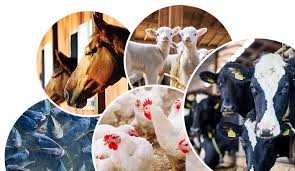Introduction to animal husbandry
Animal husbandry refers to the agricultural practice of breeding and raising livestock for various purposes, such as food production, fiber, and labor. It involves the care, management, and breeding of domestic animals, such as cows, sheep, goats, pigs, and poultry, to ensure their well-being and productivity. Animal husbandry plays a crucial role in the agricultural sector and contributes significantly to food security and the economy.
In the context of Jammyfarm, animal husbandry is likely a key aspect of the farm’s operations. Here are some key points to consider regarding animal husbandry at Jammyfarm:
- Livestock Breeding: Jammyfarm may focus on breeding high-quality livestock for meat, milk, wool, or other products. This involves selecting superior breeding stock, managing breeding programs, and ensuring the health and well-being of the animals.
- Animal Nutrition: Providing proper nutrition to the animals is essential for their growth, reproduction, and overall health. Jammyfarm may have a nutrition program in place that includes feeding the animals a balanced diet based on their nutritional requirements.
- Healthcare: Animal health is a top priority in animal husbandry. Jammyfarm likely has veterinary care protocols in place to prevent and treat diseases, vaccinations, and regular health check-ups for the livestock.
- Housing and Facilities: Livestock at Jammyfarm require appropriate housing and facilities for shelter, protection from weather elements, and comfort. The farm may have barns, sheds, and other structures to house the animals.
- Reproduction and Breeding: Managing the reproduction and breeding of livestock is crucial for maintaining and improving the quality of the herd or flock. Jammyfarm may have breeding programs in place to optimize reproduction and genetic traits.
- Waste Management: Proper waste management is important in animal husbandry to prevent environmental pollution and maintain hygiene. Jammyfarm may have systems in place for managing animal waste and by-products.
- Animal Welfare: Ensuring the well-being and welfare of the animals is a fundamental aspect of animal husbandry. Jammyfarm may follow ethical practices and standards for animal care and handling.
- Overall, animal husbandry at Jammyfarm involves a range of practices and activities aimed at raising healthy and productive livestock. By implementing sound animal husbandry practices, Jammyfarm can maintain a sustainable and successful livestock operation.
Reflections on the Journey
In Jammyfarm animal husbandry, a variety of domesticated animals are raised and managed for different purposes. Some common animals that are typically involved in animal husbandry practices include:
- Rabbits: Rabbits are raised for meat (rabbit meat) and fur. They are known for their high reproductive rates and efficient feed conversion.
- Pigs: Pigs are raised for pork meat. They are commonly found on pig farms and are known for their fast growth and high reproduction rates.
- Goats: Goats are raised for meat (chevon), milk, and fiber (cashmere and mohair). They are versatile animals that can thrive in various environments.
- Cattle (Cows and Bulls): Cattle are raised for meat (beef), milk, and other products. They are commonly found on dairy farms and beef cattle operations.
- Poultry (Chickens, Turkeys, Ducks, Geese): Poultry are raised for meat (chicken, turkey), eggs, and feathers. They are commonly found on poultry farms and backyard settings.
- Horses: Horses are raised for various purposes, including riding, racing, work (draft horses), and companionship. They require specialized care and management.
- Sheep: Sheep are raised for their wool, meat (lamb), and milk. They are commonly found on sheep farms and ranches.
- Bees: Bees are raised for honey production and pollination. Beekeeping, also known as apiculture, is an important aspect of animal husbandry.
- Fish: Fish farming, also known as aquaculture, involves raising fish for food. Commonly farmed fish species include tilapia, salmon, trout, and catfish.
- Camels: Camels are raised for milk, meat, and transportation in arid regions. They are well-adapted to harsh environments.
These are just a few examples of the animals commonly involved in animal husbandry practices. Each species has unique requirements in terms of housing, nutrition, healthcare, and breeding, and farmers must provide proper care to ensure the well-being and productivity of the animals.

